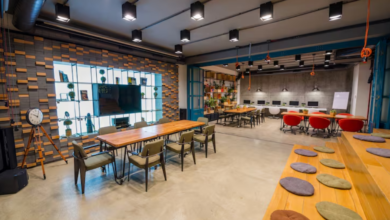how to choose a roofing style

Table of Contents
Understanding Common Roofing Styles
Choosing the right roof style is a big decision for any homeowner, and understanding the basics of common designs can really help. At Capital City Roofing, we see a lot of different styles around town, and each has its own vibe and practical side. Let’s break down a few of the most popular ones you’ll encounter.
Gable Roofs: A Classic Choice
Gable roofs are probably what most people picture when they think of a house. They have those two sloping sides that meet at the top, forming a triangle shape, or a gable, at each end. This design is super common because it’s pretty straightforward to build, which usually means it’s more budget-friendly. Plus, that triangular shape is great for shedding rain and snow, keeping water away from your home. It also gives you a good amount of attic space or room for a finished loft if you’re into that.
Hip Roofs: Stability and Style
Hip roofs are a bit different. Instead of those triangular gable ends, all sides of a hip roof slope downwards towards the walls. Usually, they slope at the same angle, giving the roof a sort of pyramid look. This design is known for being really sturdy, especially in windy areas. Because there are no vertical gable walls, they tend to hold up better against strong winds. They also offer a nice, finished look from all sides. If you’re worried about wind or just like the aesthetic, a hip roof is a solid option. We often see these when we’re doing a roof leak repair in Austin, as they handle our occasional strong gusts well.
Shed Roofs: Modern Simplicity
Shed roofs, also called a pent roofs, are the simplest of the bunch. They’re basically just one single sloping plane. Think of a single-sloped surface connecting a higher wall to a lower wall. This style is really popular for modern homes, additions, or even accessory buildings like garages. They’re easy to install and can be quite cost-effective. The slope is great for drainage, and they can let in a lot of natural light if you add skylights. For a clean, minimalist look, a shed roof is hard to beat. We also see a lot of interest in metal roof Austin options for this style, as it complements the modern lines perfectly.
Exploring Architectural Aesthetics
Choosing a roof style isn’t just about keeping the rain out; it’s a big part of your home’s overall look. Think about the architectural style of your house – does it lean towards something historic or more modern?
Victorian Charm
Victorian homes often feature complex rooflines with multiple gables, dormers, and steep pitches. These designs can add a lot of character, but they also mean more intricate work for installers. If you’re aiming for that classic Victorian look, you’ll want a roof that complements the ornate details of the house. Sometimes, these older styles can be prone to issues, so keeping up with maintenance or considering a roof leak repair Austin specialist might be wise down the line.
Craftsman Appeal
Craftsman homes typically have lower-pitched roofs with wide overhangs and exposed rafters. Gable and hip roofs are common here, often with exposed rafter tails adding a rustic touch. The focus is on natural materials and a connection to the outdoors. A well-chosen roof can really tie the whole Craftsman aesthetic together.
Mid-Century Modern Lines
Mid-century modern architecture often embraces simpler, cleaner lines. You might see low-pitched gable roofs, shed roofs, or even flat roofs. The emphasis is on functionality and a minimalist appearance. For these homes, a sleek metal roof Austin could be a fantastic choice, offering both durability and a modern look that fits the era’s design principles. Capital City Roofing can help you find the perfect fit for this style.
Selecting a roof that matches your home’s architectural period can significantly boost its curb appeal and value. It’s about creating a cohesive look from the foundation to the peak.
Considering Climate and Durability
When you’re thinking about a new roof, especially here in Texas, climate and how long the roof will last are big deals. We get some serious weather, from intense sun to strong winds and sometimes hail. Picking the right style and materials means your roof can handle all that without constant problems.
Weather Resistance for Texas
Texas weather can be tough on roofs. The strong sun beats down, which can dry out and crack some materials over time. Then you have those sudden, strong thunderstorms that can bring high winds and hail. A well-chosen roofing style can make a big difference in how well your home stands up to these conditions. For instance, a hip roof, with its sloping sides on all four corners, tends to be more stable in high winds than a gable roof. We also see a lot of homeowners asking about a metal roof Austin, and for good reason. Metal roofs are known for their durability against wind and hail, and they reflect a lot of the sun’s heat, which is a plus in our hot summers.
Longevity of Materials
How long your roof lasts is directly tied to the materials you choose. Some materials, like basic asphalt shingles, might be cheaper upfront but won’t last as long as others. High-quality asphalt shingles can last 20-30 years, but materials like metal or certain types of tile can easily go 50 years or more. When you’re looking at the long game, investing in a more durable material can save you money and hassle down the road. Think about it – replacing a roof is a big job, so getting one that lasts is usually the smarter move. Capital City Roofing often advises clients to consider the lifespan versus the initial cost.
Maintenance Requirements
Different roofing styles and materials also come with different maintenance needs. Some materials are pretty low-maintenance, meaning you might only need an occasional check-up. Others might require more regular cleaning or inspections to prevent issues like moss growth or debris buildup. If you’re not someone who wants to be up on the roof often, or you don’t want to pay for frequent cleanings, choosing a low-maintenance option is key. Even with the best roof, though, things can happen. If you notice a problem, like a potential roof leak repair Austin residents know to call us quickly to prevent further damage. Regular checks, even on low-maintenance roofs, can catch small issues before they become big, expensive ones.
Evaluating Material Options
Choosing the right roofing material is a big decision, and it really impacts how your house looks and how well it holds up over time. Let’s break down some of the most common options you’ll see around here.
Asphalt Shingles: The Standard
Asphalt shingles are popular for a reason. They’re usually the most budget-friendly option upfront, and most homeowners are familiar with them. They come in a ton of colors and styles, so you can usually find something that matches your home’s look. Installation is pretty straightforward for most roofing companies, which also helps keep costs down. However, they don’t last as long as some other materials, and they can be susceptible to wind damage if not installed correctly. If you’re dealing with a minor issue, like a small tear, you might be able to get a roof leak repair Austin service to patch it up, but for bigger problems, replacement might be in your future.
Tile Roofing: Timeless Elegance
Tile roofs, especially clay or concrete tiles, give a home a really classic, upscale look. They’re super durable and can last for decades, often outliving the structure itself. They’re also great for hot climates because they reflect solar heat, which can help keep your energy bills a bit lower. The downside? They’re heavy, so your home’s structure needs to be able to support them, and installation is more complex and costly than with asphalt shingles. Plus, if a tile breaks, it can be a bit tricky to replace just one without damaging others.
Metal Roof Austin: Durability and Efficiency
Metal roofing has really gained traction, especially with options like standing seam metal roofs. A metal roof Austin installation from Capital City Roofing can be a fantastic long-term investment. They are incredibly durable, resistant to fire, wind, and even hail. Many metal roofs are also made from recycled materials and are fully recyclable at the end of their life, making them an eco-friendly choice. They’re also very efficient at reflecting solar heat, which can lead to significant energy savings. While the initial cost might be higher than asphalt shingles, their longevity and low maintenance requirements often make them more cost-effective over the life of the roof. Plus, they look pretty sharp, offering a modern aesthetic that works with many architectural styles. If you’re looking for something that lasts and performs well in our Texas weather, a metal roof is definitely worth considering.
Budgeting for Your New Roof
When you’re thinking about a new roof, the money side of things is a big deal, right? It’s not just about picking a style; it’s about what fits your wallet now and down the road. Getting a clear picture of the costs involved is super important before you even pick out shingles.
Initial Installation Costs
This is the upfront price tag. It covers everything from the materials themselves – like asphalt shingles, tiles, or even a metal roof in Austin – to the labor for tearing off the old roof and putting on the new one. Factors like the complexity of your roof’s shape, the pitch, and the type of materials you choose will really affect this number. For instance, a simple gable roof might be less expensive than a multi-angled hip roof. If you’re dealing with a roof leak repair in Austin, sometimes the cost of a full replacement can be surprisingly close to a major repair, so it’s worth getting quotes for both scenarios.
Long-Term Value Proposition
Think beyond just the initial payment. Some roofing materials, like a durable metal roof Austin homeowners love, cost more upfront but can last much longer, meaning you won’t have to replace them as often. This saves you money over the lifespan of your home. It’s about investing in quality that pays off. Capital City Roofing can help you weigh these long-term benefits against the initial expense.
Energy Savings Potential
Your roof plays a big role in how energy-efficient your home is. Certain materials and colors can reflect more sunlight, keeping your house cooler in the summer and reducing your air conditioning bills. Lighter colors and specific types of metal roofing are known for this. On the flip side, a well-insulated roof can also help keep heat in during the winter. We look at how your new roof can contribute to lower utility bills year-round.
Local Regulations and Permits
When you’re thinking about a new roof, especially in a place like Austin, you can’t just pick a style and material and call it a day. There are rules and regulations you’ve got to follow. It’s not just about what looks good; it’s about what’s safe and legal.
Austin Building Codes
Every city has its own set of rules for construction, and Austin is no different. These codes are in place to make sure your roof is built to last and can handle our local weather. They cover things like the type of materials allowed, how they need to be installed, and even how strong the structure needs to be. Getting this right from the start saves a lot of headaches later. For instance, certain wind resistance standards might be higher here than in other parts of the country. If you’re considering a metal roof Austin homeowners often choose for its durability, you’ll want to make sure it meets all the specific requirements.
HOA Requirements
If you live in a neighborhood with a Homeowners Association, you’ve got another layer of rules to consider. HOAs often have their own aesthetic guidelines. They might dictate the color of your shingles, the pitch of your roof, or even the types of materials you can use. It’s always a good idea to check with your HOA board before you get too far into the planning process. They usually have a design review committee that needs to approve any major exterior changes. Ignoring these rules can lead to fines or even being forced to redo work.
Permitting Process Overview
Before any work can begin, you’ll likely need a building permit from the city. This process involves submitting plans for your roofing project, which will be reviewed by the city’s building department. They’ll check to see if your proposed roof design and materials comply with all the local building codes. Once approved, you’ll get the permit, and the work can start. After the job is done, there’s usually a final inspection to make sure everything was completed according to the approved plans and codes. Working with a reputable company like Capital City Roofing can make this process much smoother, as they’re experienced with local permit requirements and can handle much of the paperwork for you. They can also help if you need a roof leak repair Austin residents might face after a storm.
It’s easy to get caught up in the excitement of choosing a new roof – the style, the color, the material. But taking the time to understand and comply with local regulations and HOA rules is just as important as the aesthetic choices. Skipping this step can lead to costly delays, fines, or even having to tear off and redo work that wasn’t approved.
Wrapping It Up: Your Roof, Your Choice
So, picking a roof style might seem like a big deal, and honestly, it is. But by looking at your home’s look, thinking about the weather where you live, and what fits your budget, you can totally figure it out. Don’t rush the decision. Take your time, maybe chat with a roofer if you’re still unsure. The right roof will not only look good but also keep your house safe for years. It’s a pretty important part of your home, after all.






